The Louvre has organized an exhibition with some 60 masterpieces from the collection of the Museo di Capodimonte in Naples, which is currently undergoing renovation. The Museo di Capodimonte is one of the largest museums in Italy and one of the few museums whose collection covers all schools of Italian painting. Since I haven’t been to Naples yet I didn’t want to miss out on the opportunity to see some highlights from the collection.
Most of the loans are displayed in the Louvre’s 300 meter long Grande Galerie alongside the Louvre’s own collection of Italian Renaissance paintings. And so Caravaggio’s “The Flagellation” is seen next to his “Death of the Virgin” while Titian’s “Danaë” is paired with Correggio’s “Venus”.
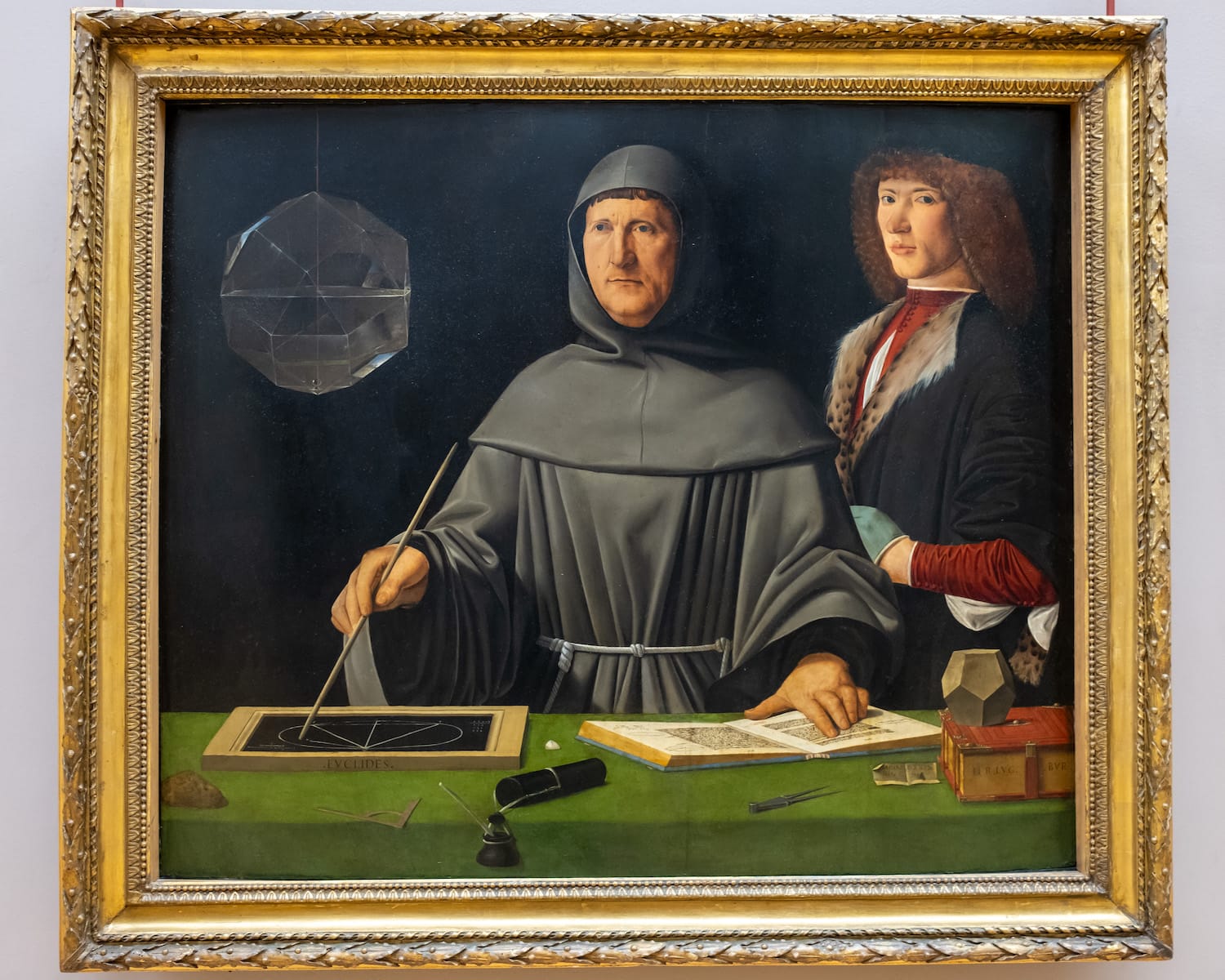
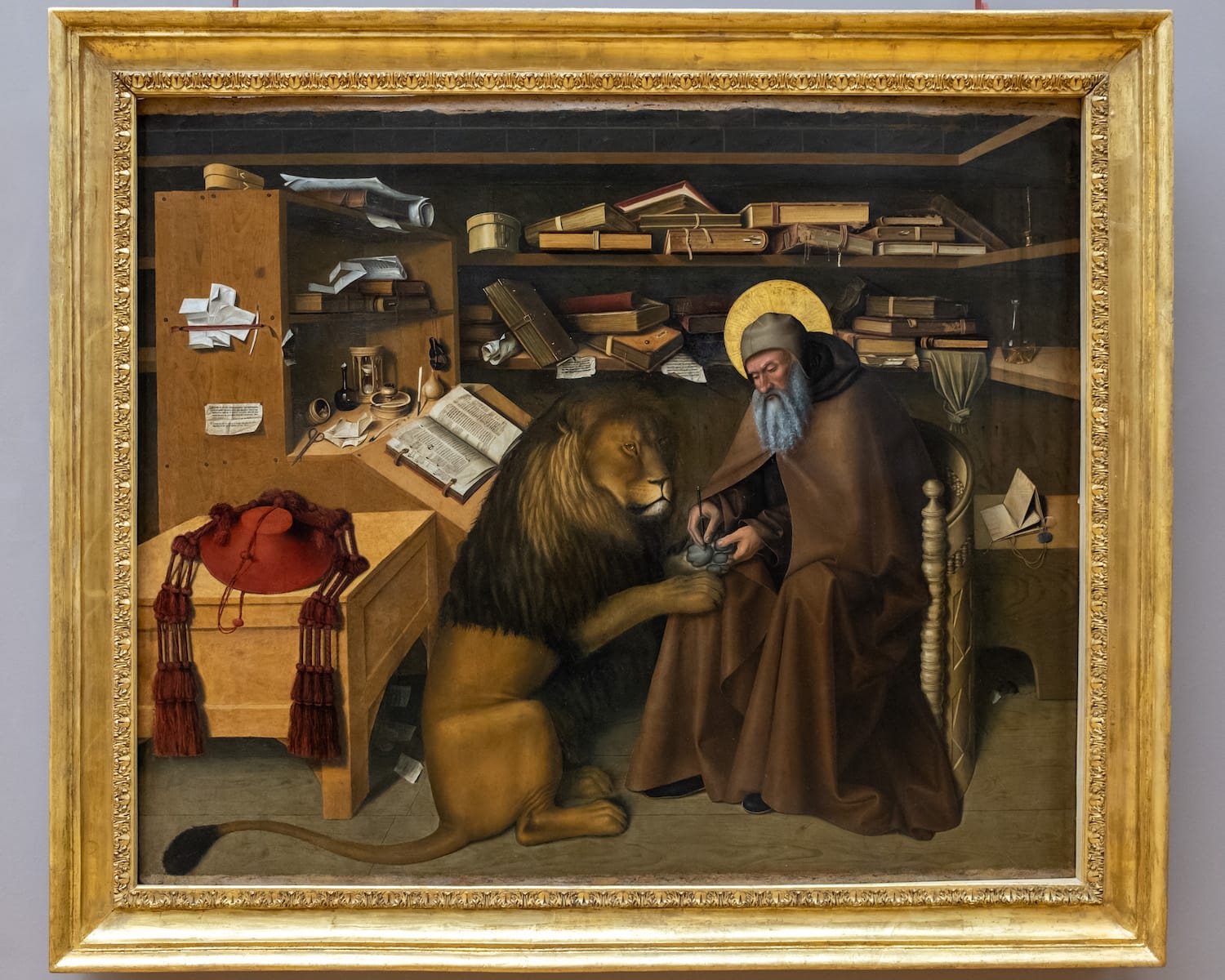
Jacopo de’ Barbari, “Portrait of Luca Pacioli” (left) and Colantonio, “Saint Jerome in His Study” (right)
There is much to enjoy. I loved the amazing “Portrait of Luca Pacioli” (c. 1495-1500) attributed to the Italian Renaissance artist Jacopo de’ Barbari. It portrays a scholar alongside a student and a number of scientific instruments and geometric objects. If you look closely you can see three reflections in the polyhedron that is suspended in the top left corner of the painting and which is half filled with liquid. It is interesting that de’ Barbari chose to give this mathematical object the same weight as the faces of the master and his student. It is also interesting to note that the master looks at the polyhedron, whereas the student looks straight towards the viewer.
I also loved Colantonio’s “Saint Jerome in His Study” (c. 1445-46), which shows Saint Jerome surrounded by books removing a thorn from a lion’s paw. Legend had it that Jerome had tamed a lion by healing its paw, which may be a blend of the ancient tale of Androcles, about a man befriending a lion, and the tale of Gerasimus, a 5th century saint who was also said to have tamed a lion by removing a thorn from its paw and whose name resembles the Latin name of Jerome (Geronimus). It is fascinating to see the effort the artist has made to render the open book and the other written papers.
It was pouring with rain so I decided to stay a bit longer in the Louvre. There are worse places to shelter from the rain. The Louvre is huge and I love just walking around and stopping at whatever catches my eye.
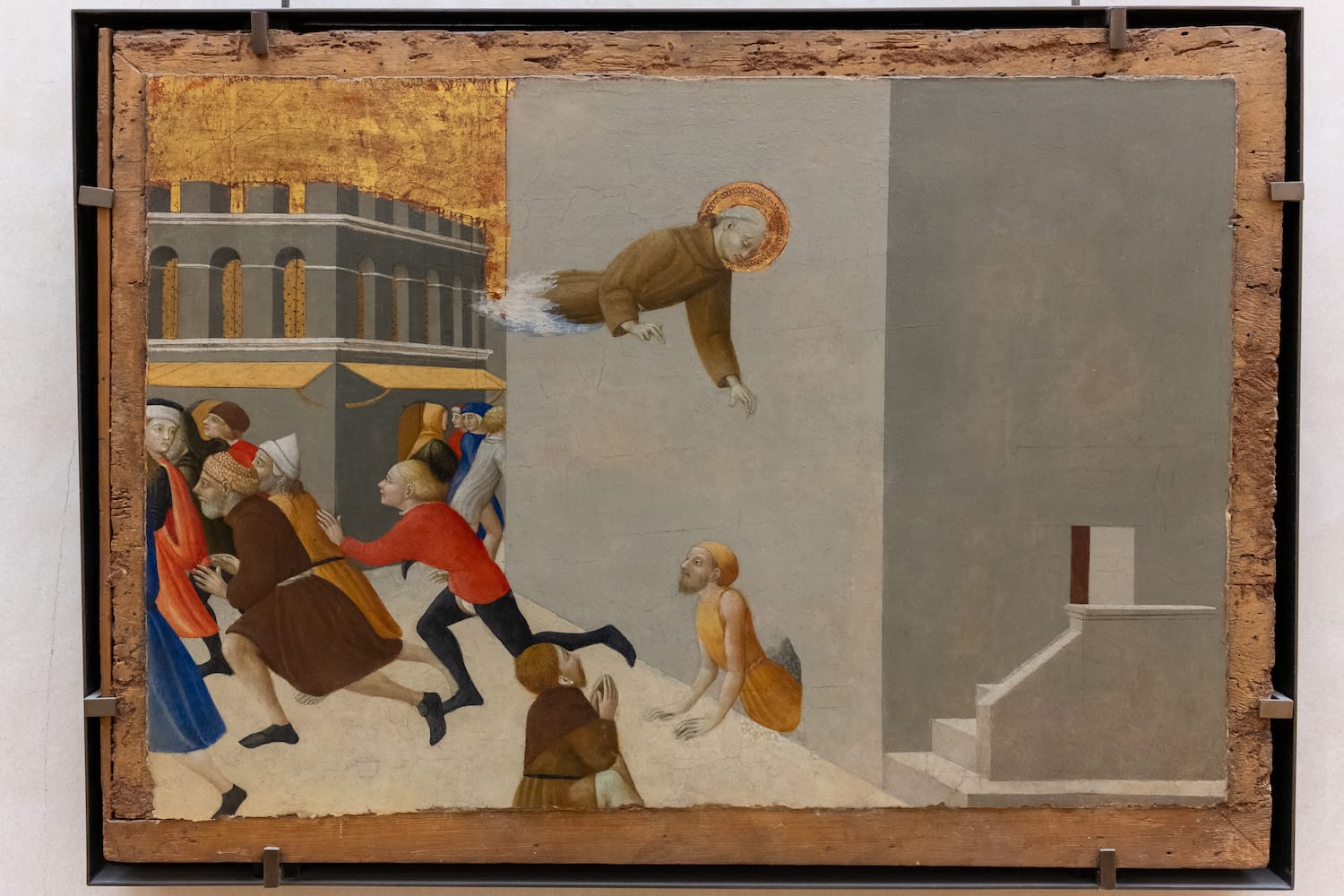
“The Blessed Ranieri Frees the Poor from a Prison in Florence” (c. 1437-1444) by Stefano di Giovanni depicts one of the miracles performed by the blessed Franciscan monk Ranieri Rasini. The saint was said to have freed 90 prisoners who had written to him from a prison in Florence, where they were held for being in debt. I really like the rendition of the prison, which predates the development of geometrical perspective, and which, in all its abstraction, looks more prison-like than a more faithful rendition would have. I also love the almost abstract expressionist brush strokes with which Giovanni painted the cloud from which the saint appears.
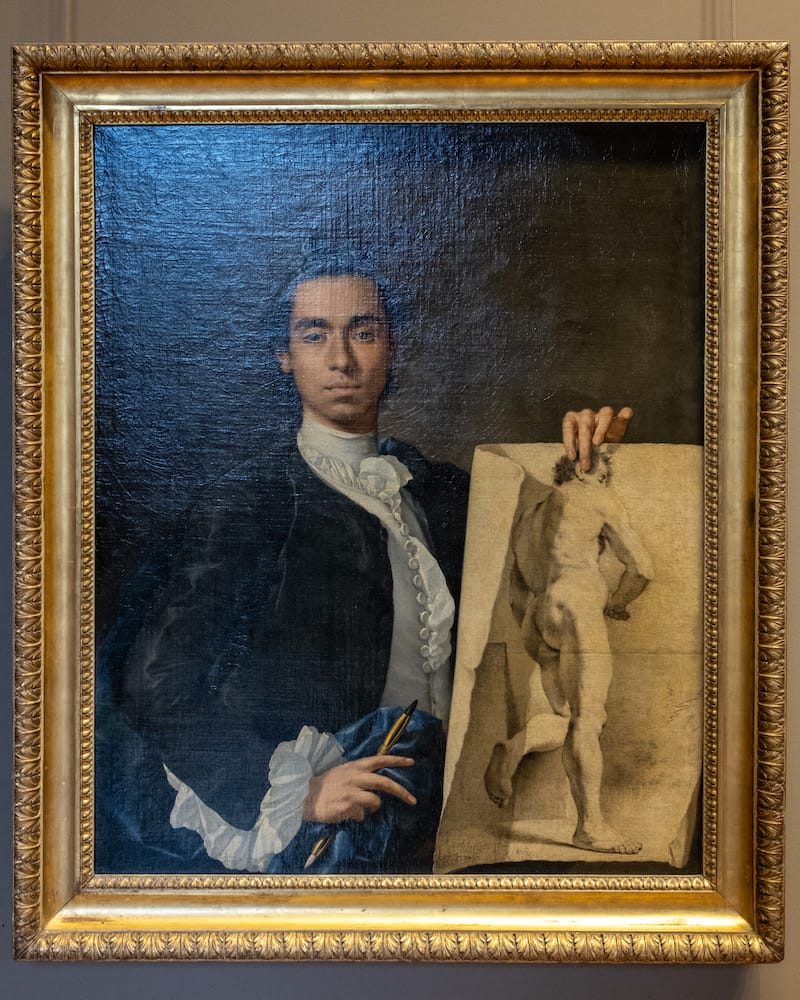
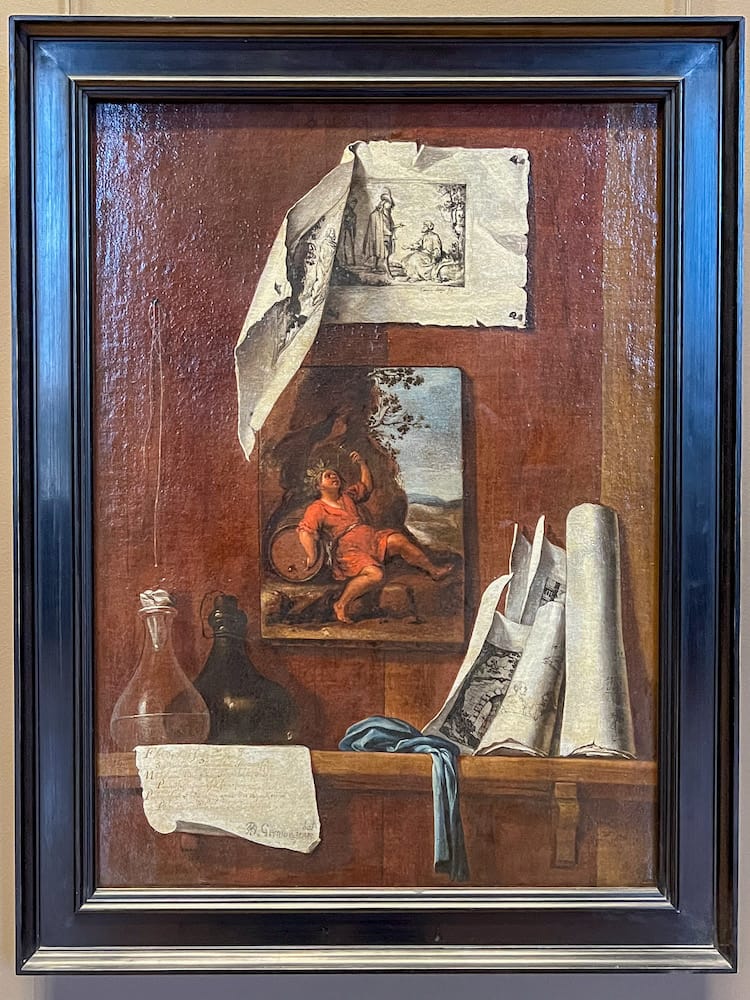
Luis Eugenio Meléndez, “Self-Portrait Holding a Nude Study” (left) and Bernardo Lorente y Germán, “Trompe-l’Oeil Still Life: Wine” (right)
I also loved Luis Eugenio Meléndez’s “Self-Portrait Holding a Nude Study” (1746), which shows him proudly holding a drawing of a male nude. What I find fascinating is that this is not a drawing, but a painting of a drawing. Bernardo Lorente y Germán’s “Trompe-l’Oeil Still Life: Wine” (c. 1730) similarly includes several paintings of drawings and a painting of a written letter.
Naples à Paris. Le Louvre invite le Museo di Capodimonte is at the Louvre, Paris until 8 January 2024.